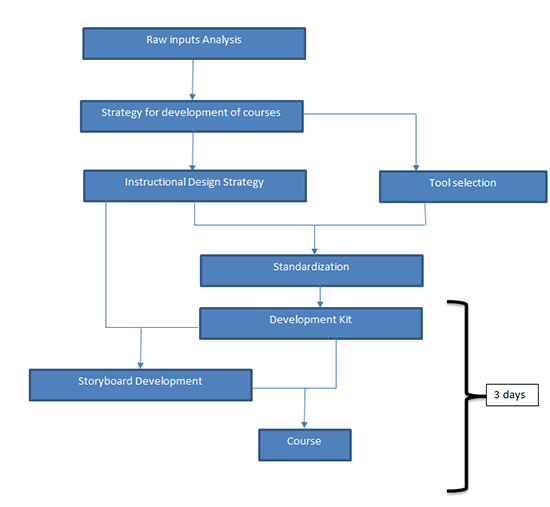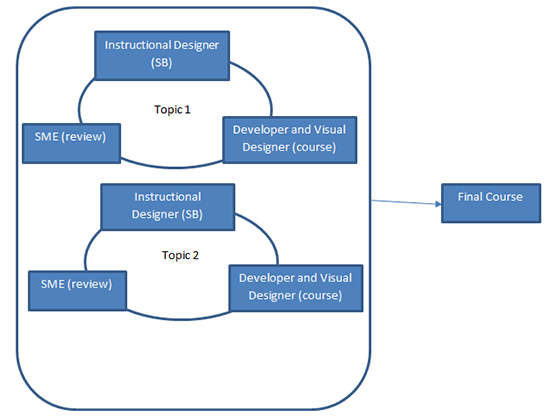How to Develop an E-learning Curriculum in 3 Days

We have developed an eLearning curriculum, based on client inputs in the form of PowerPoint presentations in just 3 days, using Articulate Storyline. Sounds unbelievable? But, it’s true. This task could be accomplished by following the process mentioned below.

- First, we need to analyze the ‘raw’ inputs in the form of PowerPoint presentations. These presentations are used to impart training in a classroom. They are not comprehensive in terms of content and additional information needs to be collected to build an eLearning course. For example, if we are building a digital course to impart training to sales people on a product, we need to collect information about its features and how they are useful. We also need to gather details of similar products launched by competitors. PowerPoint presentations, used to impart product training in a classroom, may not contain all this information. So, after performing the content analysis, we need to seek clarifications from the client to bridge the gaps in the content, if any.
- After analyzing the inputs, we need to formulate a proper strategy for the development of the curriculum in quick time. We need to formulate a suitable instructional design strategy and decide on the right authoring tool(s) to develop the course.
- Coming to the instructional design strategy, we need to make sure that the content is presented effectively. For instance, if we are developing a curriculum on a family of products – A, B and C, we can explain the objectives of the curriculum and provide a brief introduction to the product family. We then move to explain the features and uses of product A, in detail. This could be followed by comprehensive explanation of the features and benefits of products B and C. We then provide information about similar products by competitors. Finally, we summarize the course.
- We need to choose authoring tools which are user-friendly and allow the instructional designers and developers to complete their task in quick time. For example, Articulate Storyline is the ideal tool to develop product training courses easily and rapidly. This tool has powerful in-built features and its interface resembles that of PowerPoint.
- After creating the instructional design strategy and selecting the right authoring tool, we need to standardize the GUI, types of animations, types of interactivities, screens used to introduce the courses and explain the learning objectives. We also need to standardize the screens used for assessments.
- After standardization, we need to develop a functional development kit based on the strategy and the authoring tool. The kit needs to be developed in such a way that instructional designers as well as developers can use it easily. The instructional designers need to use only those types of interactivities and animations, specified in this kit. The functional course has to contain all the types of screens, outlined during standardization. This kit can be used to develop all the courses in the curriculum.
- It is now time to develop the courses. It is advisable to follow the AGILE eLearning development model. This model calls for close interaction between the subject-matter experts, instructional designers and online course developers. The instructional designer develops the storyboard of the first topic and sends it to the developer for producing the course. The developer creates the course quickly, using the authoring tool(s), specified in the kit, and the subject-matter experts review the course. While the subject matter experts review the course, the storyboard of the second topic is developed and sent for production. In this way, all the modules of the online training curriculum are created very rapidly as little time is wasted. Finally, after all courses are developed, the subject-matter experts provide feedback for the entire course and then the instructional designers revise the storyboards and developers incorporate the changes in the courses.

If the course development deadline is very short, we can use the services of additional staff to meet the timelines.
Thus, we can quickly convert PowerPoint presentations into an eLearning curriculum. Hope you find this blog informative. How do you develop online training curriculum. We’d love to hear your experiences.




![Integrating Diversity, Equity, and Inclusion (DEI) in Learning and Development Culture [Slideshare]](https://blog.commlabindia.com/hubfs/Imported_Blog_Media/Integrating-Diversity-Equity-and-Inclusion-DEI-in-Learning-and-Development-Culture-Slideshare.jpg)
